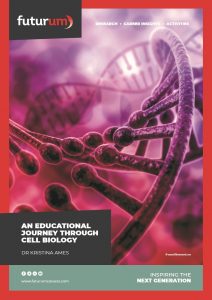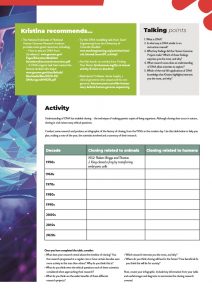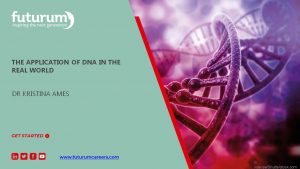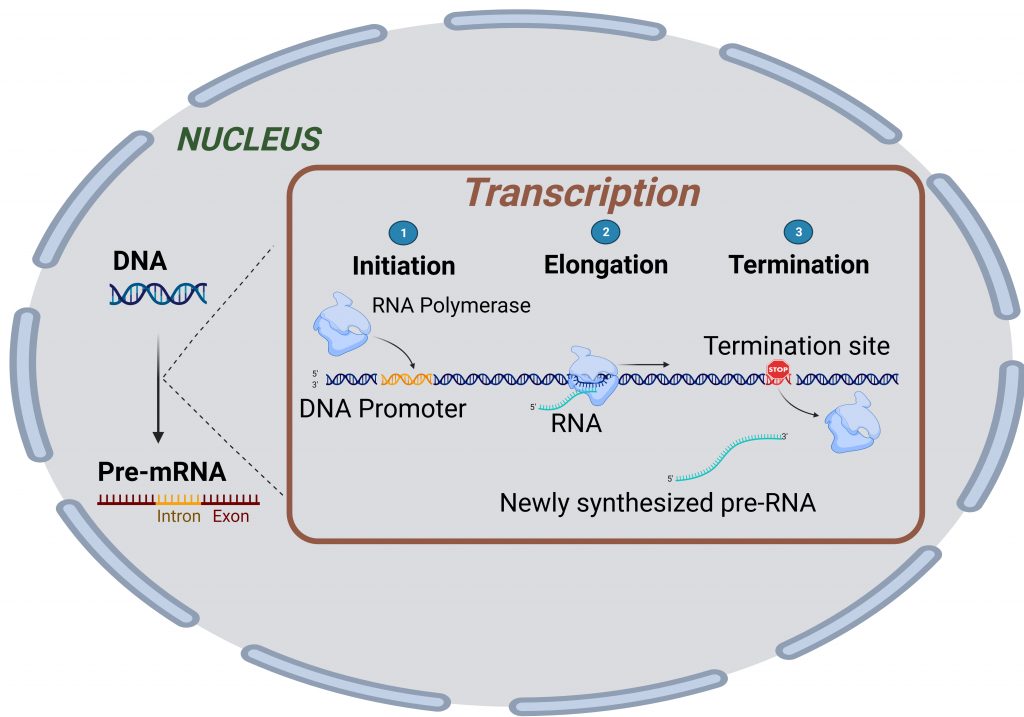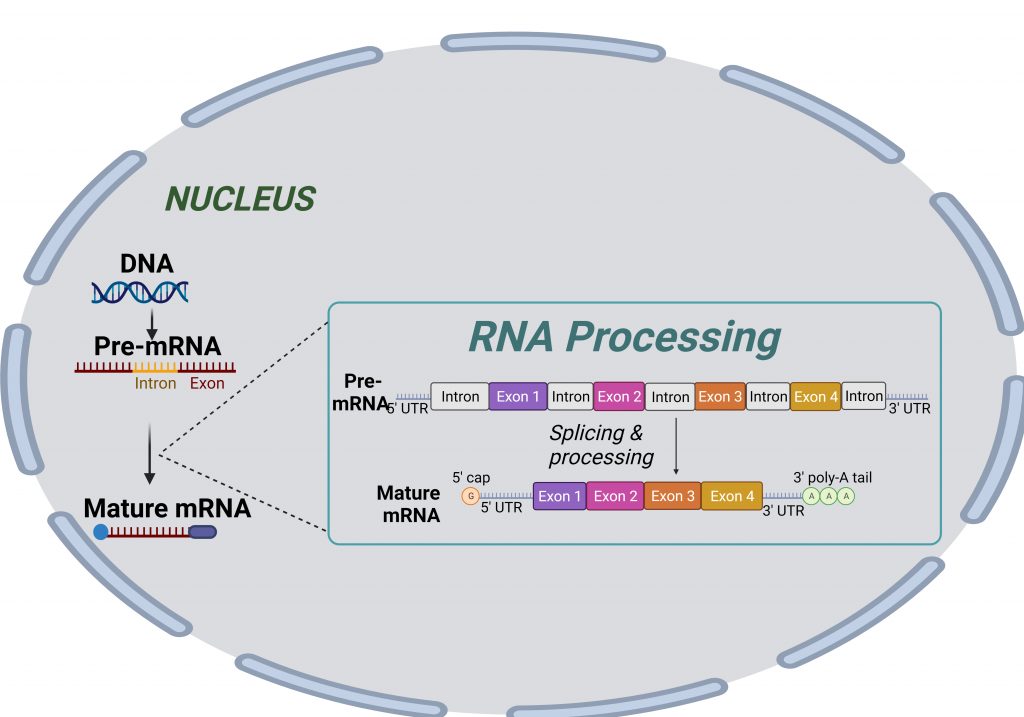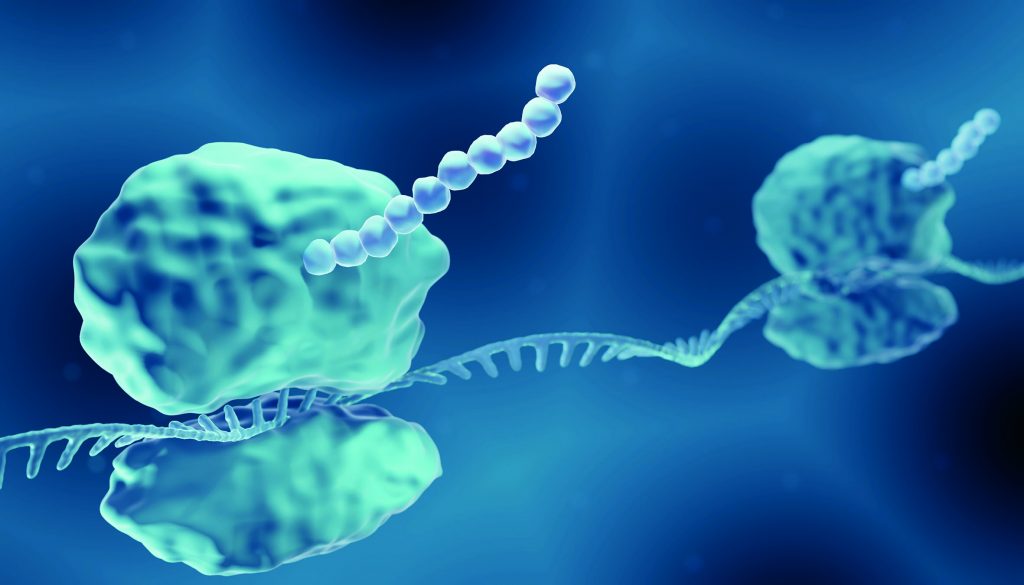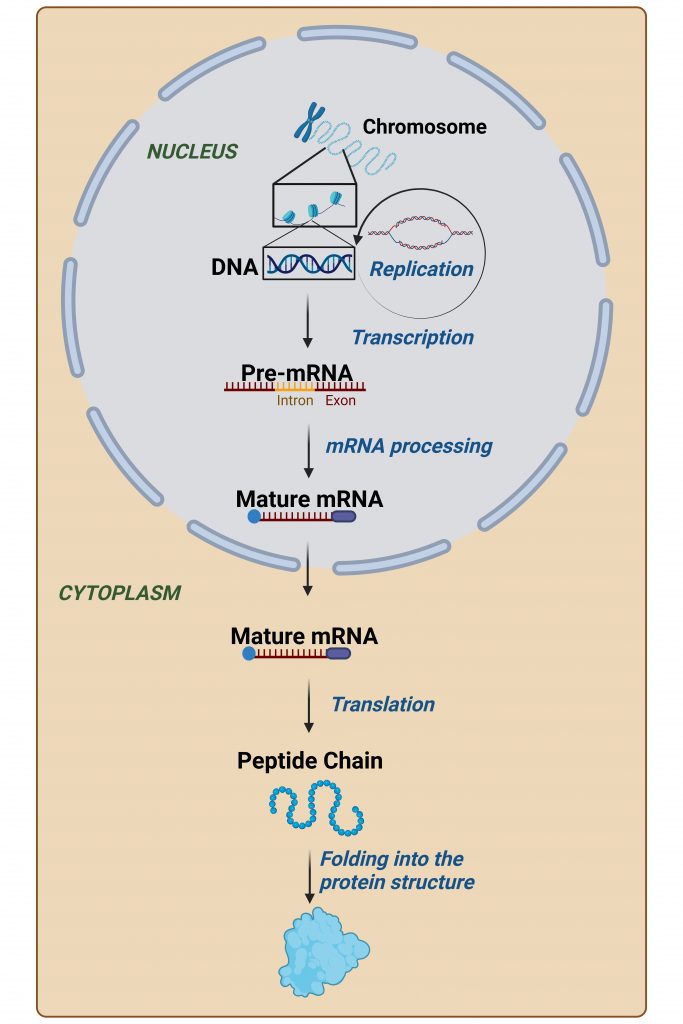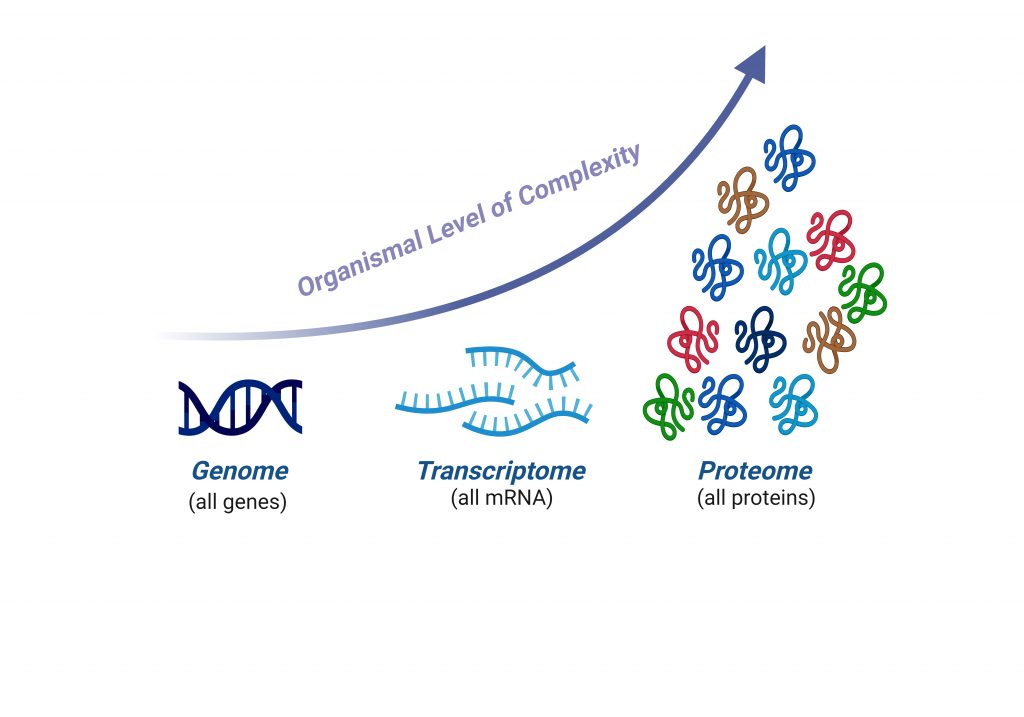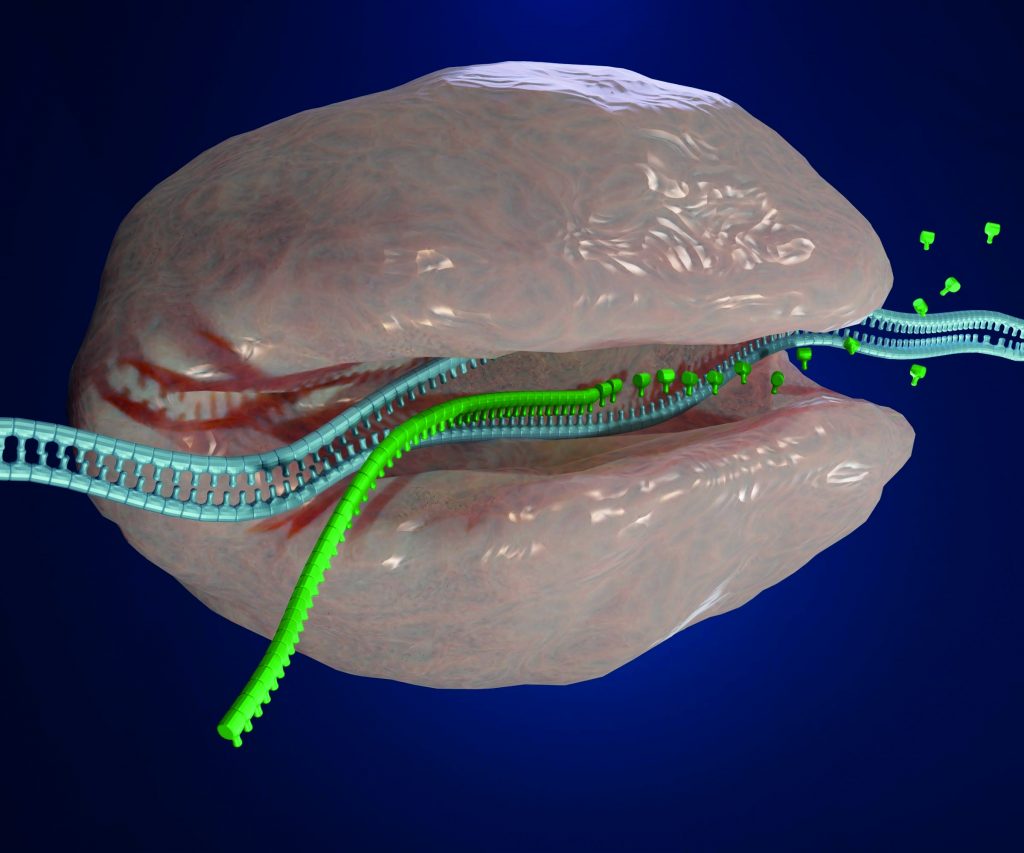An educational journey through cell biology
Dr Kristina Ames is the Assistant Director for Cancer Research Training and Education Coordination (CRTEC) at the Albert Einstein College of Medicine in New York, USA. As a biomedical scientist and passionate educator, Kristina talks us through key concepts of cell biology and how understanding of them shapes scientific research and impacts society.
TALK LIKE A CELL BIOLOGIST
Autophagy — the process of cellular recycling and self-cleaning of unnecessary cellular components, such as non-functional organelles and proteins
DNA — the molecule that stores genetic information in living cells
Gene expression — the process of using genetic information stored within DNA to synthesise functional proteins, enabling the cell and organism to perform specific functions
Genome — the complete set of genetic material in an organism
Haematopoietic stem cells (HSCs) — cells found in bone marrow from which all blood cells are produced
Mouse model — a genetically engineered lab mouse used to study human disease
Myelodysplastic syndrome (MDS) — a group of disorders resulting in dysfunctional blood cell production which can lead to blood cancer
PI3K — a signalling pathway that regulates a wide variety of cellular functions including cell survival and growth
Protein — a complex biological molecule, playing a variety of essential roles in living organisms
RNA — the molecule produced during gene expression that contains copies of a gene
“As a scientist, you always find something new, something that you didn’t know yesterday,” says Dr Kristina Ames, whose passion for learning and education has led her to her current role as the Assistant Director for Cancer Research Training and Education Coordination (CRTEC) at the Albert Einstein College of Medicine. “My fascination with the world around me drives me to keep learning new things and exploring different perspectives, which broadens my understanding of the complexities and wonders of the world,” she says.
With a background in stem cell research, Kristina’s recent study focuses on the human blood production system, investigating why blood cancer develops and working towards a potential treatment that could restore the function of blood production cells. “This work combined my knowledge of and expertise in the cellular recycling process (autophagy), cellular proliferation, and genetic interactions between signalling pathways,” she explains. “In my research, I used a mouse model system to understand the role of a specific signalling pathway – PI3K – in haematopoietic stem cells (HSCs).”
Because the PI3K pathway regulates multiple cellular processes, and Kristina only wanted to study its influence on HSCs, she used a mouse model that allowed her to delete three redundant isoforms of PI3K in the mouse’s haematopoietic system. Kristina used this Triple Knock Out (TKO) mouse model to investigate whether the TKO mice had normal blood production. She discovered that removing the three isoforms from mouse bone marrow cells led to a significant decrease in the populations of all types of blood cells.
“We showed the important protective role of PI3K in maintaining the cellular recycling process that preserves the balance between HSC self-renewal and differentiation, that, in turn, prevents a certain type of cancer,” she explains.
Kristina’s research is fascinating – and you can learn more about it by reading her Futurum research article and watching her animation. Her work also highlights the huge impact cell biologists can have on people’s lives.
Through her CRTEC role, Kristina is working to bridge the existing educational gap in research training for students, especially for those from underserved communities and backgrounds that are underrepresented in STEM. She is passionate about mentoring a new generation of researchers needed for the evolving STEM landscape and reminds us that future achievement starts with small steps.
“If you pause each day and pay attention to small victories of learning and your growing knowledge, your life becomes fascinating and rewarding,” Kristina says. “In this day and age, where everything is so fast paced, we need to remember to be patient and appreciate the process of everything we do in our lives, perhaps even more than the final destination. When we learn to appreciate what we do every day, our life becomes more interesting and reaching a goal becomes more enjoyable. Then, we can really savour the victory.”
 Kristina Ames PhD
Kristina Ames PhD
Assistant Director for Cancer Research Training and Education Coordination (CRTEC), Albert Einstein College of Medicine, New York, USA
Fields of research: Cell Biology, Stem Cells
Funders: US National Institutes of Health (NIH); National Cancer Institute (NCI); National Heart, Lung and Blood Institute (NHLBI); Montefiore Einstein Cancer Center
Kristina explains the ‘central dogma’
“What is the ‘central dogma’ of biology?
The central dogma of molecular biology was formulated by Dr Francis Crick, a British scientist, in 1958. It has been viewed as a fundamental principle of biology and explains the flow of genetic information: DNA specifies RNA and RNA specifies protein.
Why does the dogma matter?
The central dogma describes the flow of genetic information from DNA to RNA to proteins and is a powerful, fundamental concept to help your learning. It provides a solid foundation for life sciences; it is the starting principle for understanding the basic information flow in biological organisms, from DNA to protein. By understanding this concept, you can gain a deeper appreciation of molecular biology and how cellular processes are interconnected. The central dogma can be used to understand DNA structure and function, transcription and translation, gene expression, and molecular genetics. It is a starting point to learning about molecular biology; I see it as a powerful tool to understand the processes of life.
How has understanding of the dogma changed in recent years?
The central dogma proves that, in most cases, genetic information is transferred in the direction from DNA to RNA to protein. However, like with anything else in life, there are exceptions. There seem to be factors other than DNA that specify proteins, and the flow of the information does not necessarily always go in the direction from DNA to proteins.
Since the central dogma was first formulated, scientists have learnt that DNA specification of RNA can be reversed. There is a group of viruses called retroviruses, including the human T-cell lymphotropic virus type 1 (HTLV-1) and the human immunodeficiency virus (HIV), that reverse transcribing strands of RNA to DNA using an enzyme called reverse transcriptase. A newly made segment of DNA is then incorporated by the enzyme integrase into the organism’s DNA, causing a frameshift mutation and resulting in the expression of different DNA or RNA sequences in the amino-acid sequence. Moreover, this example highlights how series of proteins are responsible for modifying the DNA segment – reverse transcriptase transcribes RNA into DNA, and integrase incorporates the new DNA segment into the existing DNA, thus demonstrating how proteins can specify DNA.
Another interesting exception to Crick’s central dogma is the unique prion example. Prion diseases are rare, degenerative and fatal neurological disorders such as Creutzfeldt-Jakob disease (CJD) and fatal familial insomnia (FFI). Prions are abnormal agents that are infectious and produce atypical folding of normal cellular proteins. In the case of prions, abnormal proteins infect and change normal proteins, rather than reproduce. Prions do not contain genetic material in the form of nucleic acids and they do not multiply, but they affect similar proteins – often in the brain – by behaving as templates to convert other naturally occurring proteins into their abnormal shape.
Exceptions to the rules, like these exceptions to the central dogma, are one of the reasons why I love exploring cell biology. To be a scientist is to continuously engage in exploration without ever stopping.”
Reference
https://doi.org/10.33424/FUTURUM414
Human cells replicating
© CLIPAREA l Custom media/Shutterstock.com
3D illustration of ribosomes building amino acid chains during translation
© ART-ur/Shutterstock
Kristina explains, ”Transcription is the crucial process of synthesising RNA molecules from the DNA template.”© Love Employee/Shutterstock.com
Kristina explains the structure of DNA & DNA replication
KEY TERMINOLOGY
Adenine (A), cytosine (C), guanine (G) and thymine (T) — the four ‘bases’ found in DNA. They combine in pairs, always A with T, and G with C
Chromosome — the structure containing DNA in a cell’s nucleus
Genome — the complete set of genetic material in an organism
What is DNA, and what does it do?
These are important, fundamental questions! DNA is the molecule inside cells that contains the genetic instructions for the cells’ development and function. DNA has a language of nucleotides that it uses to ‘write’ an organism’s instruction manual.
The language of DNA is composed of only four chemical bases: adenine (A), cytosine (C), guanine (G) and thymine (T). DNA is structured in the form of a double helix, consisting of two intertwined strands resembling a twisted ladder. Each of the DNA strands has a ‘backbone’ made of alternating sugar (deoxyribose) and phosphate groups with one of the four bases (A, C, T, or G) attached to each sugar. The bases on the two strands link together, connecting the two strands of DNA. These four bases arrange themselves in different sequences to create genes that carry different instructions for the organism.
In a human body, there are approximately 3 billion DNA bases packed into the chromosomes in the nuclei of the cells. What is fascinating is that about 99% of those bases are the same in every person; the remaining 1% is what makes you unique!
Why is the structure of DNA significant?
The structure of DNA enables genetic information storage, replication and transmission, as well as genetic mutations and diversity. DNA’s double-helix structure allows it to store and transmit genetic information, replicate (make a copy of itself) during cell division and provide the basis for evolution. The sequence of nucleotides in DNA determines the genetic code that directs protein synthesis, which is essential for cellular function. Thus, DNA’s structure is crucial for understanding the basis of heredity, evolution and biology.
What is the process of DNA replication?
DNA replication is the process by which a cell creates an identical copy of its DNA before cell division. The process begins with the unwinding of the double helix structure, creating a replication ‘fork’. DNA polymerase then adds complementary nucleotides to each strand, creating two new double-stranded DNA molecules. This ensures that each daughter cell (resulting from the division of a single cell) receives an accurate copy of the genetic material.
How has the understanding of DNA impacted science?
The Human Genome Project (1990-2003) generated the first sequence of the human genome. This project provided fundamental information about human genetic makeup and accelerated the study of human biology, drastically improving the practice of medicine. The Human Genome Project provided three surprising findings:
1. Most of the genome is non-protein coding. Out of 3.2 billion bases, only 1.5% code for specific proteins.
2. Humans have a small number of protein coding genes compared to other species. For example, 46 human chromosomes carry 21,000 protein coding genes, while 12 chromosomes of the rice plant carry 37,000 protein coding genes.
3. Humans and chimpanzees share 98% of their DNA sequence, and each human on the planet is 99.5% similar to every other human!
DNA is central to our knowledge of biological processes. Errors or mutations in DNA can lead to genetic disorders and evolutionary changes. DNA, replication allows timely repair of damaged DNA which is critical for the maintenance and transmission of genetic information. Not only does DNA serve as the fundamental blueprint for all living organisms, but it also dictates the functioning of our body under normal circumstances, as well as the development and progression of diseases. The more details scientists understand about the structure and function of DNA, the more they can investigate disease pathways, evaluate genetic predisposition to specific diseases, diagnose genetic disorders, formulate new drugs and bring them to the clinic to treat patients.
How has this understanding impacted society?
In so many ways! DNA is critical to the identification of pathogens. Since detection of DNA presence does not require a viable organism, it provides a vital advantage in the use of molecular techniques for microbial identification.
In addition to medical uses, the uniqueness of DNA to each individual makes it a vital tool for forensic science in criminal investigations, where forensic analysis is used to identify criminals. It can also answer other questions, such as identifying the remains of a missing person and determining the biological parent of a child. Moreover, DNA forensics is used to track food-borne epidemics, identify endangered species in shipments of smuggled material, and trace the history of humans around the world, among other things.
Within agriculture, DNA is used to help improve livestock and plants, as the development of DNA-based technologies opened up possibilities for improving the quality and yields of agricultural products. In addition, genetic engineering has enabled reduced costs of food production, enhanced nutrient composition, and decreased use of pesticides, providing greater food security and protecting the environment.
Kristina explains transcription
KEY TERMINOLOGY
Amino acid — molecules that form proteins
Cytoplasm — gelatinous liquid inside a cell, surrounding the nucleus
Mammalian — the group of vertebrate animals whose young are nourished with milk
Ribosome — a structure made of both RNA and protein
RNA — the molecule produced during gene expression that contains copies of a gene
What is transcription, and what does the process involve?
Transcription is the crucial process of synthesising RNA molecules from the DNA template. It is the initial step in the flow of genetic information according to the central dogma, where the genetic code from DNA is transferred to messenger RNA, which carries the instructions for protein synthesis. This process occurs inside the nucleus of the cell and involves the creation of an accurate RNA copy of a gene’s DNA sequence, which contains the code for the corresponding protein. The RNA copy, known as messenger RNA or mRNA, carries this information to the ribosomes, where it is used to assemble the amino acids and synthesise the protein.
All of the RNA in a cell is made by DNA transcription. At a basic level, DNA transcription is similar to DNA replication. Transcription starts with the opening and unwinding of a DNA double helix to expose the bases on each DNA strand. Unlike in replication however, only one of two strands of the DNA double helix serves as a template for the synthesis of an RNA molecule. Similar to replication, the sequence of nucleotides in the RNA is determined by the DNA template. The complementarity of RNA nucleotides to the DNA template is essential for the accurate transcription of genetic information, wherein the base pairing rules dictate that adenine (A) pairs with thymine (T) and guanine (G) pairs with cytosine (C). However, the difference is that adenine (A) on DNA molecule pairs up with uracil (U) on the RNA molecule. The incoming ribonucleotides on the newly forming RNA are linked one by one to each other on the growing RNA chain during the transcription.
Why does RNA matter?
Most genes carried in a cell’s DNA specify the amino acid sequence of proteins. However, there are other genes that code for the final product, that is, the RNA itself. Although these genes are the minority compared to the protein coding genes, they are no less important for cells. For example, the complete DNA sequence analysis of the genome of the yeast S. cerevisiae revealed that more than 10% of the total number of yeast genes produce RNA as their final product. Similar to the proteins, these RNAs are major components in the biochemical reactions and structural components of important processes in the cell.
Scientists don’t know all of the functions of the RNAs, but here are some examples:
snRNA – small nuclear RNA molecules that play a major role in the splicing of pre-mRNA to form mRNA;
rRNA – ribosomal RNA molecules that form the core of ribosomes (including the large and small ribosomal subunits);
tRNA – transfer RNA molecules that play a key role in the translation process of making protein from RNA, where they act as adaptors to select amino acids and hold them in place on a ribosome for incorporation into protein.
In a typical mammalian cell, total RNA makes up a few percent of the cell’s dry weight, where the majority of the cell’s RNA is rRNA, and mRNA comprises only 3–5% of the total RNA. Intriguingly, at any given point, the mRNA population of the cell is made up of tens of thousands of different species of mRNA, but only about 10 to 15 molecules of each species of mRNA are present in each cell. RNA is a versatile and indispensable molecule that underpins many fundamental biological processes such as catalysing chemical reactions, regulating gene expression, and participating in various signalling pathways in the cell, and it has numerous applications in medicine and biotechnology.
What are new discoveries adding to this area of scientific knowledge?
In recent years, scientists at Massachusetts Institute of Technology (MIT) in the US proposed the existence of the cellular machinery that transcribes DNA into RNA in the form of specialised droplets called condensates (scitechdaily.com/radical-newview-of-gene-control). These droplets occur only at certain sites on the genome. They require an ‘on-demand biochemical factory’ at specific locations on a gene that is being expressed, allowing the droplet to concentrate all the necessary molecules for transcription, then disassemble them once the ‘job’ is done.
Similarly to the condensates, it was shown that cells have a ‘replication timing programme’ that is thought to be an ideal timing for the cell that determines the DNA replication process (scitechdaily.com/60-year-scientificmystery-about-dna-replication-solved). These concentrations of cellular resources in time and space offer a new way to understand cellular organisation. Instead of randomly floating through the cytoplasm and bumping into other molecules, proteins involved in processes, such as relaying molecular signals, may form specific droplets at specific times, allowing them to interact with the right partners.
Many other recent discoveries highlight new roles for RNA, including editing, splicing and regulation of gene expression. RNA-based technologies, such as CRISPR/Cas9, are revolutionising gene editing and therapeutics.”
Kristina explains translation
KEY TERMINOLOGY
Cytoplasm — the gel-like substance that fills a cell and surrounds the nucleus
Differentiated cell — specialised cell with unique functions and characteristics
Homeostasis — the process of maintaining stable internal conditions for optimal cell function
Stem cells — unspecialised cells with potential to develop into specialised cells
Nucleus — the organelle within a cell that contains the chromosomes
Progenitor cells — cells produced from HSCs that have not fully differentiated into mature blood cells
“What is translation, and what does the process involve?
The second part of the central dogma of molecular biology is the translation of RNA to protein. Once mRNA is produced, it leaves the nucleus and enters the cytoplasm. In the cytoplasm, mRNA can be translated to protein immediately, stored for later translation, or degraded. Translation is the process during which the genetic code that was transcribed to mRNA is read one codon (three nucleotides) at a time. Groups of the transfer RNA molecules, tRNA, bring amino acids one by one to the ribosome and match them to the correct mRNA sequence, binding them to one another within the ribosome to produce the growing amino acid chain of the protein.
Why does translation matter?
Proper regulation of protein synthesis is very important for normal cell function, since it is indispensable in the gene expression process for the multitude of proteins in the cell for every cellular process. In general, the rate of protein synthesis is proportional to the concentration and translational efficiency of its mRNA.
Regulation of translation also plays an important role in controlling the expression of many genes that respond to nutrient supply, hormones or stress. Furthermore, protein synthesis takes a lot of energy from the rapidly growing or biosynthetically active cell, and therefore requires tight regulation. Any abnormalities in protein synthesis of normal cell function can contribute to the development of disease. Therefore, understanding the mechanisms that contribute to translational control is essential for understanding cell homeostasis and disease.
Although much research has been done on understanding the regulation of translation in metabolically active cells, less is known about translation in stem cells. Recent data show that there is a significant difference between protein synthesis in stem cells and more metabolically active differentiated progenitor cells. Increasing evidence suggests that keeping a low level of translation in stem cells is important for controlling stem cell fate, and increased translation is associated with differentiated cells. Moreover, during normal development, when stem or progenitor cells differentiate, protein synthesis is altered, which determines the cell’s fate. Understanding how translation regulates cell fate will provide insights for how stem cells can generate desired cell types and prevent or treat cancer.
Translational control is critical for the development and survival of cancer cells. Cancer cells frequently rely on the translation phase of gene expression, though it is not fully understood why translation is targeted. Several major signalling pathways can reprogram the genome via translation. Cancer cells also can use translation to adapt to cellular stress by translating mRNAs that can alleviate stress and promote survival. To oppose the effects of cancer, future cancer therapies may target disruption of the translation machinery of the cell.
What are new technologies adding to this area of scientific knowledge?
For several disorders, such as diabetes, cancer and arthritis, proteins are useful as drugs as they can ease the disease. Scientists have learnt to synthesise artificial versions of these proteins. However, this process is very time-consuming and requires genetically engineering microbes or other cells to produce the desired protein. Recently, chemists at Massachusetts Institute of Technology (MIT) have devised an automated flow synthesis machine that can string together hundreds of individual amino acids to make proteins within hours (news.mit.edu/2020/faster-protein-synthesis-0528).
Scientists have also created an artificial intelligence system that can generate artificial enzymes from scratch! (https://www.sciencedaily.com/releases/2023/01/230126124330.htm). What is even more amazing is that some of these enzymes have been shown to work as well as natural enzymes, even when their artificially generated amino acid sequences were not exactly the same as in the natural protein. These new technologies can dramatically reduce the amount of time and resources required to generate synthetic proteins and could speed up the manufacturing of on-demand therapies and the development of new drugs. It’s an exciting prospect!”
Write it in the comments box below and Kristina will get back to you. (Remember, researchers are very busy people, so you may have to wait a few days.)

